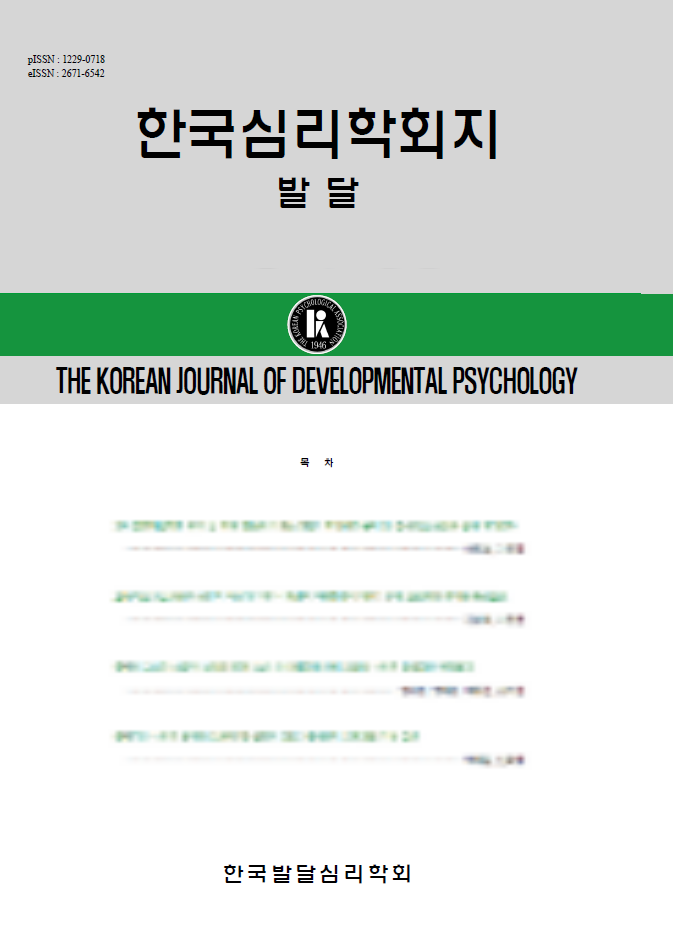open access
메뉴
open access
메뉴 ISSN : 1229-0718
ISSN : 1229-0718

In Korean, some spatial terms, including wui [on], an [in] are lexicalized as nouns which are typically marked with locative case markers such as “-ey.” We examined whether Korean 3- and 4-year-olds interpret novel nouns followed by “-ey” as referring to spatial relations. During familiarization, the children watched the videos of spatial relations between 2 objects and heard sentences including novel nouns following either a locative case marker ‘ey’ or a nominative case marker ‘ka.’ During test, children saw either a scene about novel spatial relations between the same objects(object match) or a scene about the same spatial relations between a new object and the same background object(location match). They were asked to choose an event including the referent of the novel nouns. Four-year-olds more often chose the location match when the novel word was followed by the locative case marker. Three-year-olds showed the same pattern only when there was an additional phase in which positive and negative examples of the novel word referent were contrasted.. These results suggest that Korean 3- and 4-year-olds use morphological cues when figuring out the meaning of nouns.
권도하, 정분선 (2000). 2~5세 아동의 조사 발달연구. 언어치료연구, 9, 139-163.
배소영 (2002b). MCDI-K 유아용. 한국영아발달연구센터.
이우열, 송현주 (2009). 형태론적 단서가 만 2세 아동의 새로운 동사 학습에 미치는 영향. 한국심리학회지: 발달, 22(4), 111-123.
임지룡 (2000). 한국어 이동 사건의 어휘화 양상. 현대 문법 학회, 20, 23-45.
조명한 (1982). 한국 아동의 언어 획득 연구: 책략 모형. 서울대학교 출판부.
Bowerman, M., & Choi, S. (2003). Space under construction: Language specific spatial categorization in first language acquisition. In D. Gentner and S. Goldin-Meadow (Eds.), Language in Mind: Advances in the study of Language and Cognition (pp. 387-428). Cambridge: MIT Press.
Brown, R. (1973). A first language: The early stages. Cambridge. MA: Harvard Universtiy Press.
Casasola, M. (2005). Do novel words facilitate 18-month-olds' spatial categorization? Child Development, 78, 1818-1829.
Choi, S. (1993). Development of locative case markers in Korean. In P. Clancy (Ed.), Japanese/Korean linguistics Vol. 2 (pp. 205-222). Stanford, CA: CSLI Publications.
Choi, S. (1997). Language-specific input and early semantic development: Evidence from children learning Korean. In D. Slobin (ed.) The Crosslinguistic Study of Language Acquisition, Vol. 5: Expanding Contexts. (pp. 41-133). Mahwah, NJ: Lawrence Erlbaum Associates.
Choi, S., & Bowerman, M. (1991). Learning to express motion events in English and Korean: The influence of language-specific lexicalization patterns. Cognition, 41, 83-121.
Choi, S., McDonough, L., Bowerman, M., & Mandler, J. M. (1999). Early sensitivity to language-specific spatial categories in English and Korean. Cognitive Development, 14, 241-268.
Clancy, P. M. (1997). Discourse motivations for referential choice in Korean acquisition. In H. Sohn & J. Haig (Eds.). Japanese/Korean linguistics Vol. 2 (pp. 639–659). Stanford, CA: CSLI Publications.
Fisher, C., Klingler, S., & Song, H. (2006). What does syntax say about space? 2-year-olds use sentence structure to learn new prepositions. Cognition, 101, B19-B29.
Gentner, D., & Loewenstein, J. (2002b). Relational language and relational thought. In J. Byrnes & E. Amsel (Eds.), Language, Literacy, and Cognitive Development (pp. 87-120). Mahwah, NJ: LEA.
Gentner, D., & Namy, L. L. (2004). The role of comparison in children's early word learning. In D.G. Hall & S. R. Waxman (Eds.), Weaving a lexicon (pp.533-568). Cambridge, MA: MIT Press.
Goksun, T., Kuntay, A. C., & Naigles, L. (2008). Turkish children use morphosyntactic bootstrapping in interpreting verb meaning. Journal of Child Language, 35, 291-323.
Halliday, M. A. K. (1975). Foundations of language development: Learning how to mean. New York: Academic Press.
Landau, B., & Stecker, D. (1990). Objects and places: Geometric and syntactic representations in early lexical learning. Cognitive Development, 5, 287-312.
Levinson, C. S. (2003). Space in language and cognition. London: Cambridge University Press.
McDonough, L., Choi, S., & Mandler, J. M. (2003). Understanding spatial relations: Flexible infants, lexical adults. Cognitive Psychology, 46, 229-259.
Talmy, L. (1978). Figure and ground in complex sentences. In J. Greenburg, C. Ferguson, & M. Moravcsik (Eds.), Universals of human language (IV). Stanford: Stanford University Press.
